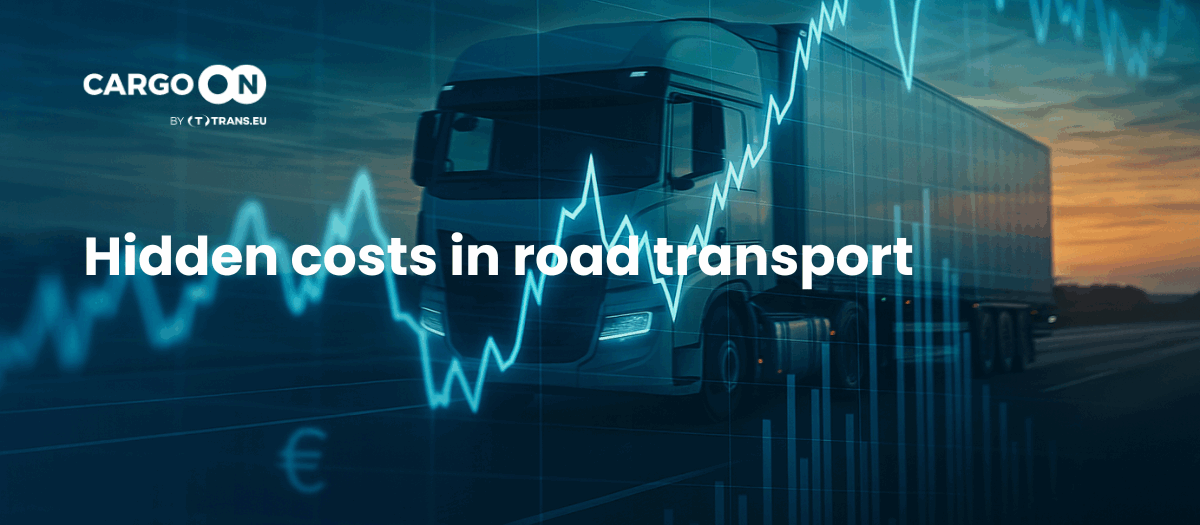Hidden costs in road transport: an analytical guide for logistics managers

For many European companies, road transport costs account for 6% to 10% of total revenue. Yet a significant portion of this spend remains under the radar. These are the hidden costs: they don’t appear in quotes or invoices, but they erode margins, affect punctuality, and reduce operational efficiency. Understanding where they arise is now a strategic priority.
Visible vs hidden costs: looking beyond rates
The kilometre-based transport rate is only one part of the cost equation. The real impact is felt across at least three levels:
- Indirect operational costs, such as waiting times during loading and unloading
- Organisational costs, linked to manual planning and non-automated processes
- Service-related costs, including penalties for missed delivery windows
According to PwC and Strategy&, inefficiencies in logistics can represent over 20% of overall transport spend, especially when integrated digital systems are missing.
Three common signs of hidden costs
1. OTIF performance below target
The on time in full KPI is a benchmark for complex supply chains. A McKinsey study indicates that the European average is around 83%, while best-in-class companies aim for 95%+.
Falling below this threshold often signals inefficiencies in planning processes and information flows.
2. Above-average waiting times
According to the european road freight rate benchmark Q1 2025 published by the IRU, waiting times of more than one hour frequently generate extra costs of €40 to €80 per trip. These delays tend to accumulate during seasonal peaks or at bottleneck locations.
3. Fragmented communication management
When shipments, exceptions and slot allocations are handled through unstructured channels (email, phone, excel), the result is information loss, slower decision-making, and a higher rate of errors.
How to identify and prevent hidden transport costs: five key areas
1. Mapping OTIF inefficiencies
Key question: do you know exactly why your shipments arrive late or incomplete?
Analyse supplier performance, lane-specific results, and time windows separately. Solutions with real-time dashboards and granular reporting — such as CargoON reports — allow managers to detect critical patterns and act proactively.

3. Optimising loading and unloading times
How efficient are your inbound and outbound flows? Can you always align warehouse staff with truck arrivals, or do bottlenecks and delays remain common?
Digital slot booking tools — such as Dock Scheduler — enable shared scheduling with partners, minimising queues, avoiding extra waiting time charges and preventing penalties linked to national regulations on waiting times, which several European countries have introduced.
4. Enabling real-time visibility
Knowing where a truck actually is, whether it will meet the scheduled arrival time, and how a deviation will affect the customer is essential. Visibility monitoring provides proactive exception management, more accurate etas, and reduces pressure on customer service teams.

5. Reviewing your platform’s cost structure
Some platforms charge access fees to carriers. This can have a boomerang effect: to compensate, carriers raise transport rates for shippers. By contrast, CargoON is free for carriers, supporting transparent and collaborative partnerships.
Turning hidden costs into strategic opportunities
Inflation and fuel prices cannot be controlled, but not all transport costs come from external factors. Many savings opportunities are internal: hidden costs are often concealed within outdated processes, poor visibility, fragmented communication and obsolete systems. They are not inevitable.
A precise analysis of hidden costs and operational performance enables logistics and supply chain managers to make data-driven decisions instead of relying on assumptions.
Digitalisation is a means, not an end: adopting tools specifically designed to handle the complexity of European road transport — such as those offered by CargoON — can make a difference in keeping businesses competitive in today’s challenging market.
Step one: get the full picture.
Step two: take action with method.
